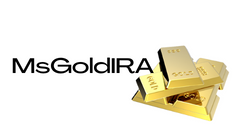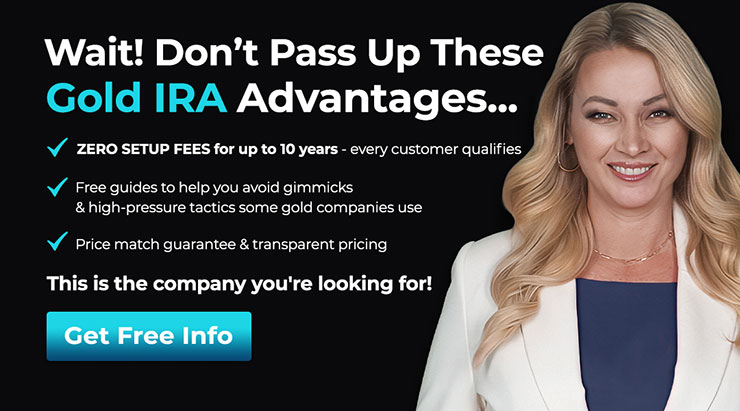When it comes to the realm of investments, the landscape is ever-evolving. Today, at Strategy World 2025, Chris Kuiper, the Vice President of Research at Fidelity Digital Assets, shook things up with a thought-provoking presentation. He challenged businesses to rethink their approach to risk, capital deployment, and long-term financial well-being. In essence, he shed light on the compelling case for Bitcoin as a strategic asset.
Bitcoin: More Than Just a Trend
The Data Speaks Volumes
Over the last ten years, Bitcoin has proven its mettle by outperforming all major asset classes. According to Kuiper, if your organization is hoarding cash or settling for low-yield bonds, you're missing out on a lucrative opportunity. The numbers don't lie – Bitcoin boasts an impressive 79% compound annual growth rate (CAGR) over the past decade and 65% over the last five years. In comparison, traditional investment-grade bonds pale in comparison, yielding a mere 1.3% nominally during the same period.
Redefining Risk and Reward
Volatility vs. True Risk
Addressing concerns about Bitcoin's volatility, Kuiper highlighted that real risk stems from permanent capital loss, not mere fluctuations. He underscored how inflation and currency devaluation pose tangible threats to balance sheets today. Surprisingly, even stalwart safe havens like U.S. Treasury bonds have shown negative real returns over time.
Strategies for Stability
To counterbalance Bitcoin's perceived volatility, Kuiper proposed two pragmatic strategies: strategic allocation and long-term vision. He emphasized that Bitcoin need not be an all-or-nothing gamble; instead, it's a tool for fine-tuning risk exposure. Even a modest 1–5% allocation of Bitcoin can substantially enhance a company's risk-adjusted returns while mitigating downside risks.
Unlocking Corporate Potential
The Balance Sheet's Tale
Shifting gears to corporate finance fundamentals, Kuiper stressed the significance of return on invested capital (ROIC) over surface-level profits. He called out the inefficiencies of letting cash sit idle, using Microsoft as a case in point. By incorporating excess cash, Microsoft's ROIC plummeted from 49% to 29%, showcasing the drag of unutilized capital.
The Path Forward
Seizing Opportunities
In parting, Kuiper posed a poignant question to business leaders: "Do you believe your current opportunities can outshine the potential of Bitcoin?" It's a compelling thought that nudges decision-makers to rethink their strategies in light of Bitcoin's strategic advantages.
As Kuiper eloquently puts it, the writing on the wall is becoming clearer by the day. The strategic integration of Bitcoin could very well be the game-changer your organization needs.
This insightful analysis by Chris Kuiper was originally featured in Bitcoin Magazine, authored by Jenna Montgomery.
Frequently Asked Questions
How much gold should you have in your portfolio?
The amount of money you need to make depends on how much capital you are looking for. A small investment of $5k-10k would be a great option if you are looking to start small. As you grow, you can move into an office and rent out desks. This will allow you to pay rent monthly, and not worry about it all at once. You just pay per month.
Consider what type of business your company will be running. In my case, I am running a website creation company, so we charge clients around $1000-2000/month depending on what they order. If you are doing this type of thing, it is important to think about how much you can expect from each client.
If you are doing freelance work, you probably won't have a monthly salary like I do because the project pays freelancers. Therefore, you might only get paid one time every six months.
Before you can determine how much gold you'll need, you must decide what type of income you want.
I would recommend that you start with $1k-2k worth of gold and then increase your wealth.
How do you withdraw from an IRA that holds precious metals?
First, determine if you would like to withdraw money directly from an IRA. Next, ensure you have enough cash on hand to pay any penalties or fees that could be associated with withdrawing funds.
If you are willing to pay a penalty for early withdrawal, you should consider opening a taxable brokerage account instead of an IRA. You will also have to account for taxes due on any amount you withdraw if you choose this option.
Next, figure out how much money will be taken out of your IRA. The calculation is influenced by several factors such as your age at withdrawal, the length of time you have owned the account and whether or not you plan to continue contributing to retirement plans.
Once you determine the percentage of your total saved money you want to convert into cash, then you need to choose which type IRA you will use. Traditional IRAs permit you to withdraw your funds tax-free once you turn 59 1/2. Roth IRAs have income taxes upfront, but you can access the earnings later on without paying additional taxes.
Finally, you'll need to open a brokerage account once these calculations are completed. Many brokers offer signup bonuses or other promotions to encourage people to open accounts. To avoid unnecessary fees, however, try opening an account using a debit card rather than a credit card.
You will need a safe place to store your coins when you are ready to withdraw from your precious metal IRA. Some storage facilities will take bullion bars while others require you only to purchase individual coins. Either way, you'll need to weigh the pros and cons of each before choosing one.
Bullion bars are easier to store than individual coins. However, each coin will need to be counted individually. However, individual coins can be stored to make it easy to track their value.
Some prefer to keep their money in a vault. Others prefer to store their coins in a vault. You can still enjoy the benefits of bullion for many years, regardless of which method you choose.
What is the tax on gold in an IRA
The fair value of gold sold to determines the price at which tax is due. You don't pay taxes when you buy gold. It's not considered income. If you decide to make a sale of it, you'll be entitled to a taxable loss if the value goes up.
As collateral for loans, gold is possible. Lenders try to maximize the return on loans that you take against your assets. This usually involves selling your gold. However, there is no guarantee that the lender would do this. They may just keep it. Or, they may decide to resell the item themselves. You lose potential profits in either case.
In order to avoid losing your money, only lend against your precious metal if you plan to use it to secure other collateral. You should leave it alone if you don't intend to lend against it.
Statistics
- Gold is considered a collectible, and profits from a sale are taxed at a maximum rate of 28 percent. (aarp.org)
- You can only purchase gold bars at least 99.5% purity. (forbes.com)
- Instead, the economy improved, stocks rebounded, and gold plunged, losing 28 percent of its value in 2013. (aarp.org)
- This is a 15% margin that has shown no stable direction of growth but fluctuates seemingly at random. (smartasset.com)
- If you accidentally make an improper transaction, the IRS will disallow it and count it as a withdrawal, so you would owe income tax on the item's value and, if you are younger than 59 ½, an additional 10% early withdrawal penalty. (forbes.com)
External Links
irs.gov
finance.yahoo.com
bbb.org
forbes.com
- Gold IRA, Add Sparkle to Your Retirement Nest egg
- Understanding China's Evergrande Crisis – Forbes Advisor
How To
3 Ways to Invest Gold for Retirement
It's crucial to understand where gold fits in your retirement strategy. There are many ways to invest in gold if you have a 401k account at work. You might also consider investing in gold outside your workplace. For example, if you own an IRA (Individual Retirement Account), you could open a custodial account at a brokerage firm such as Fidelity Investments. If you don't have any precious metals yet, you might want to buy them from a reputable dealer.
If you do invest in gold, follow these three simple rules:
- Buy Gold with Your Money – You don't need credit cards, or to borrow money to finance your investments. Instead, put cash into your accounts. This will help you to protect yourself against inflation while also preserving your purchasing power.
- Physical Gold Coins – Physical gold coins are better than a paper certificate. The reason for this is that physical gold coins are much more easily sold than certificates. Physical gold coins don't require storage fees.
- Diversify Your Portfolio. Never place all your eggs in the same basket. Also, diversify your wealth and invest in different assets. This reduces risk and allows you to be more flexible during market volatility.
—————————————————————————————————————————————————————————————-
By: Jenna Montgomery
Title: The Strategic Advantage of Bitcoin: Insights from Fidelity's Chris Kuiper
Sourced From: bitcoinmagazine.com/news/fidelitys-chris-kuiper-presents-the-investment-case-for-bitcoin-at-corporate-conference
Published Date: Wed, 07 May 2025 19:37:26 +0000














